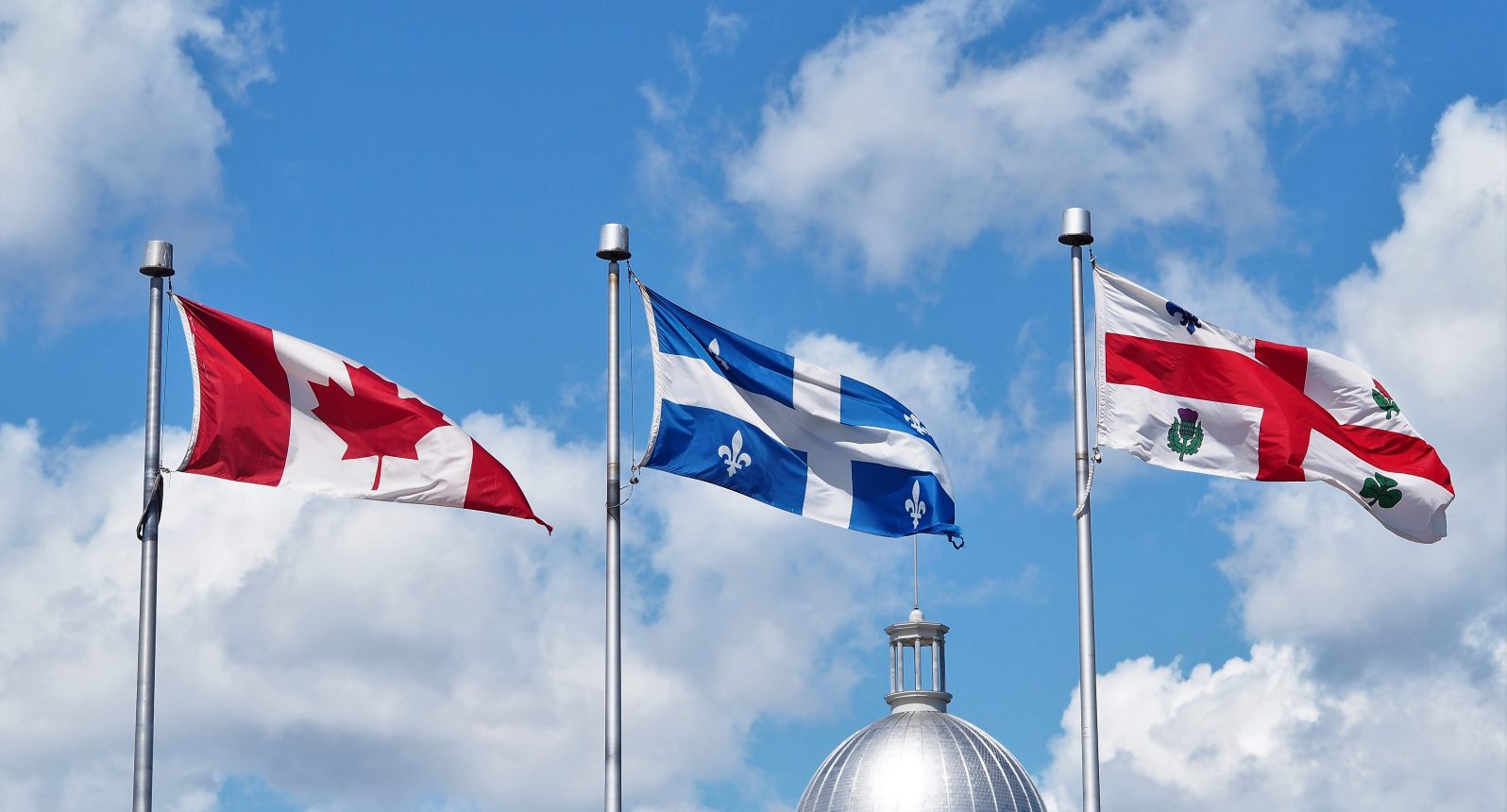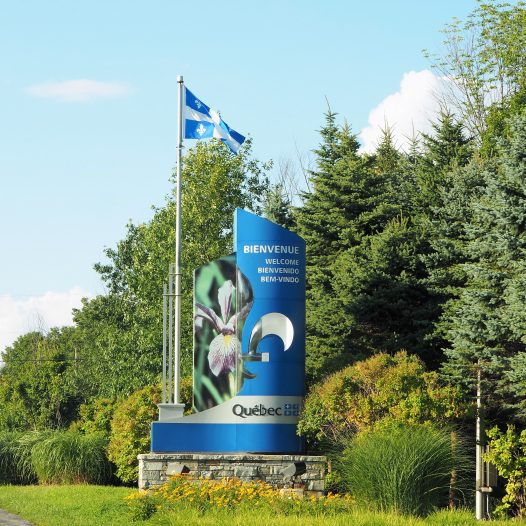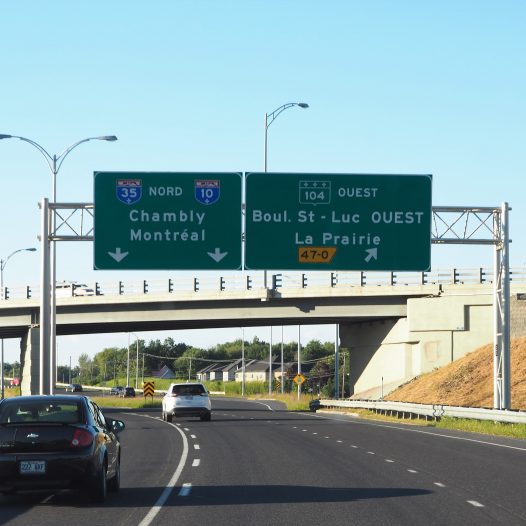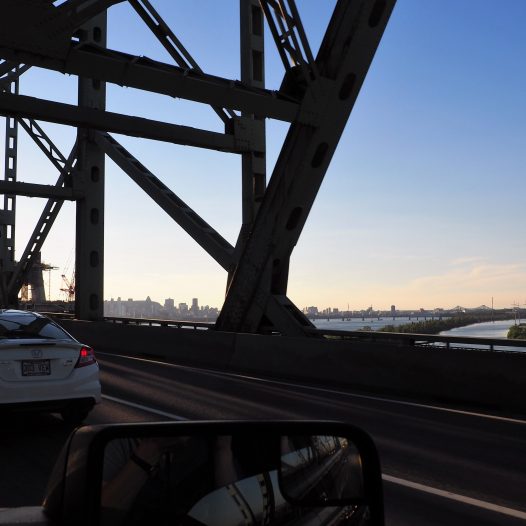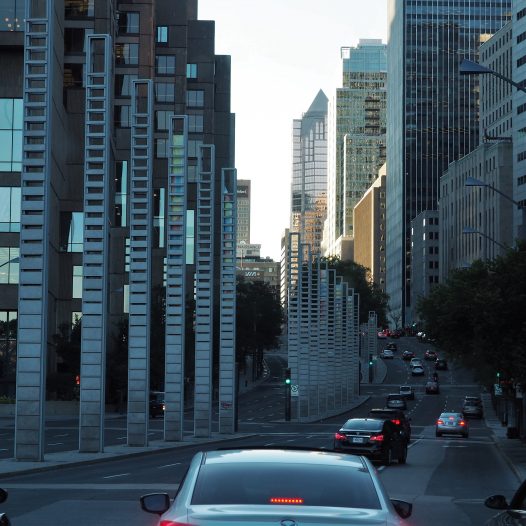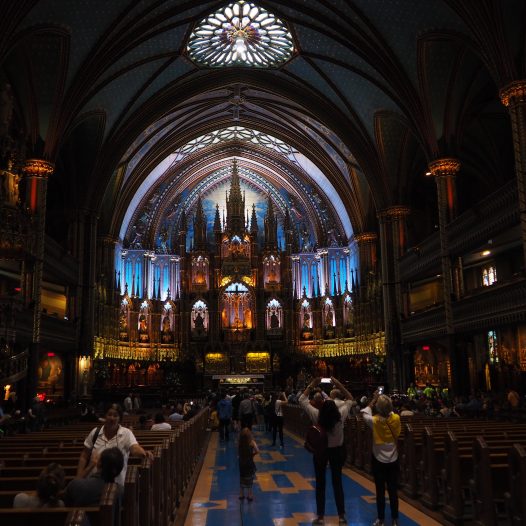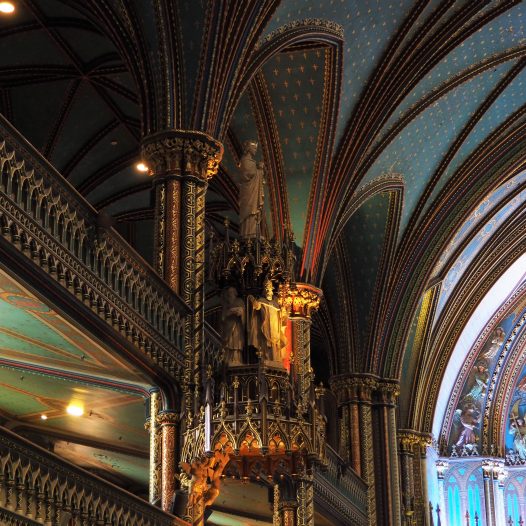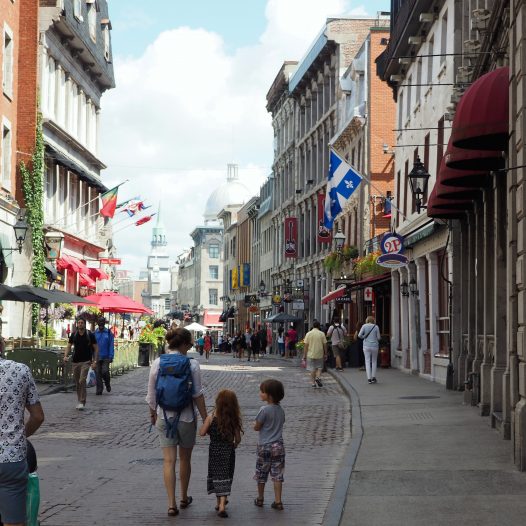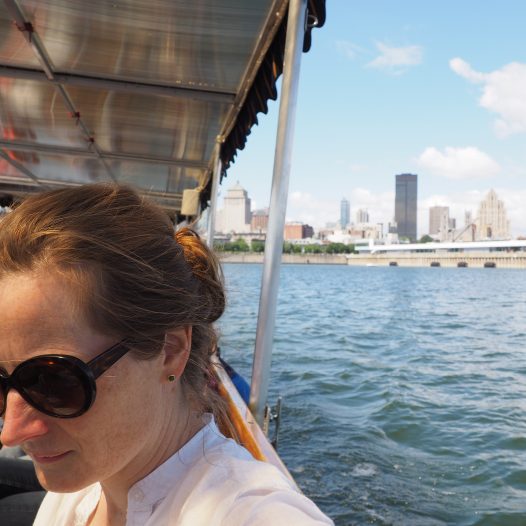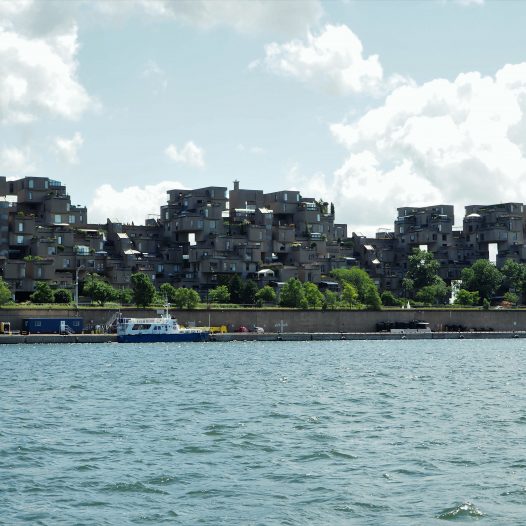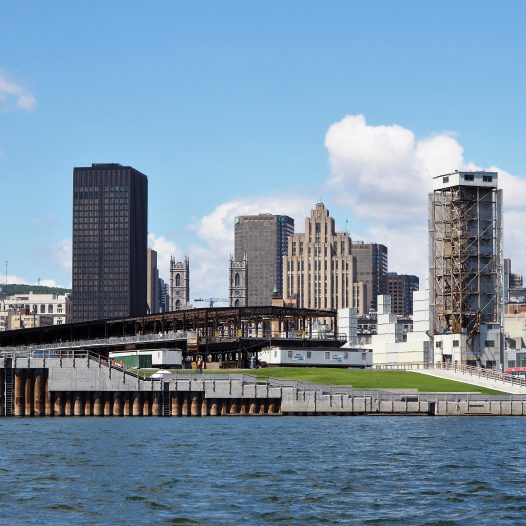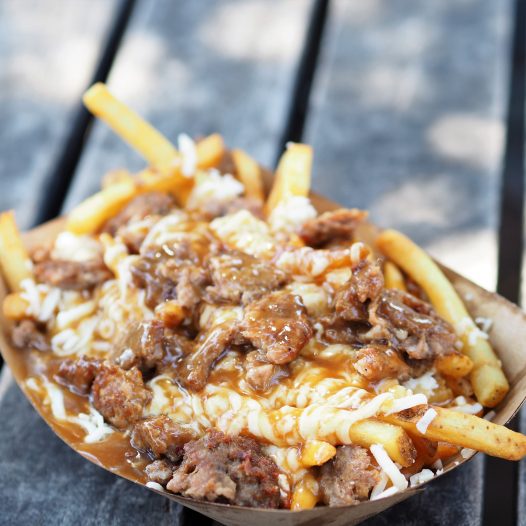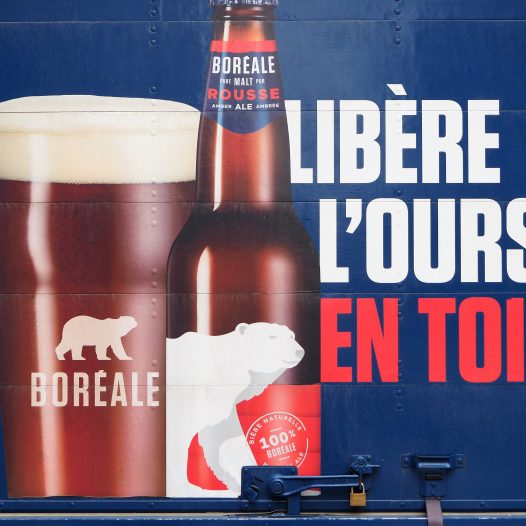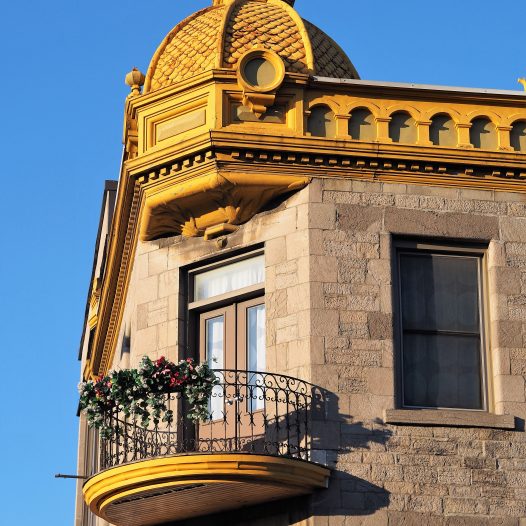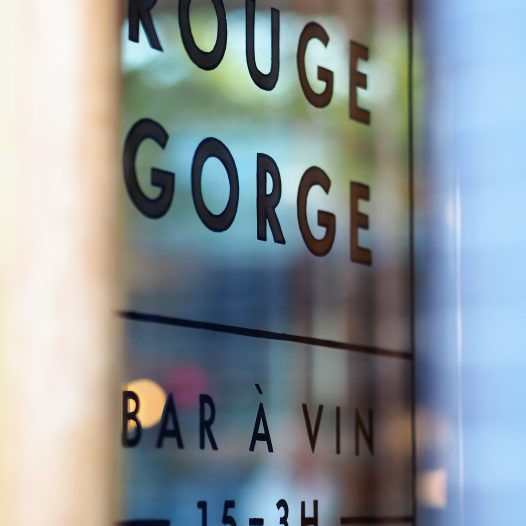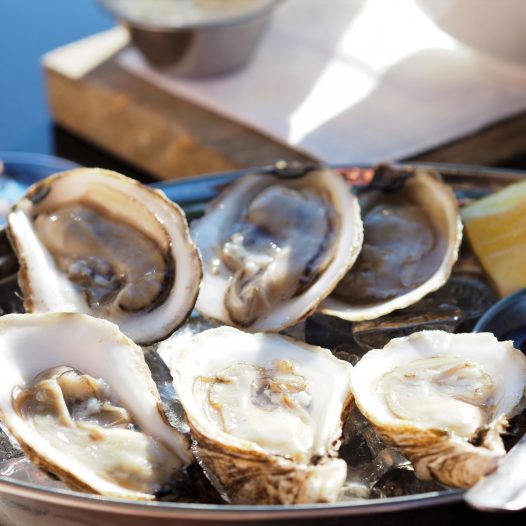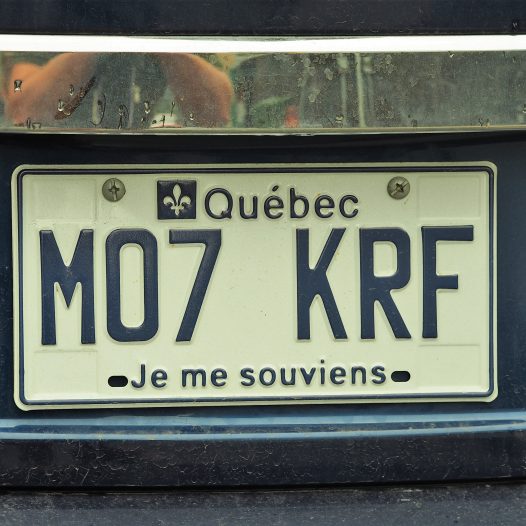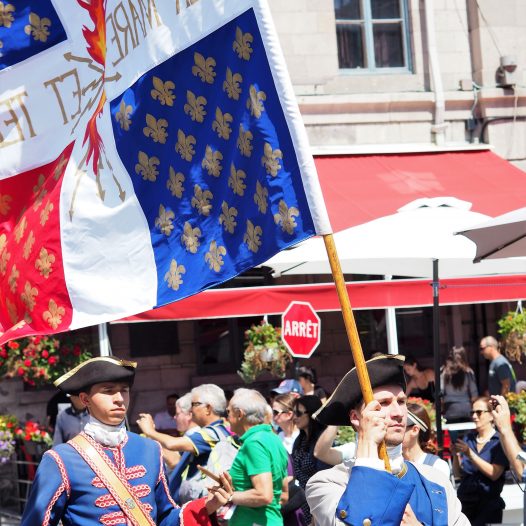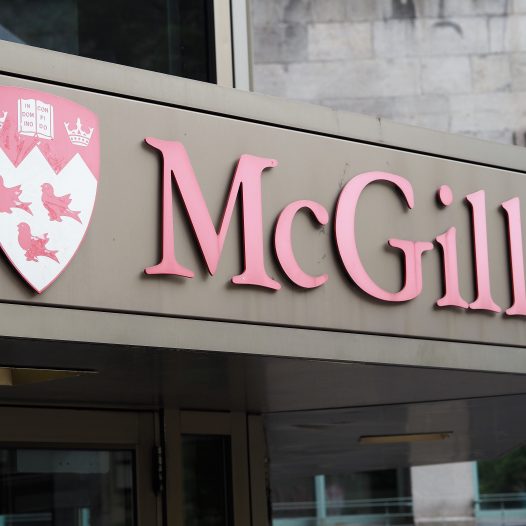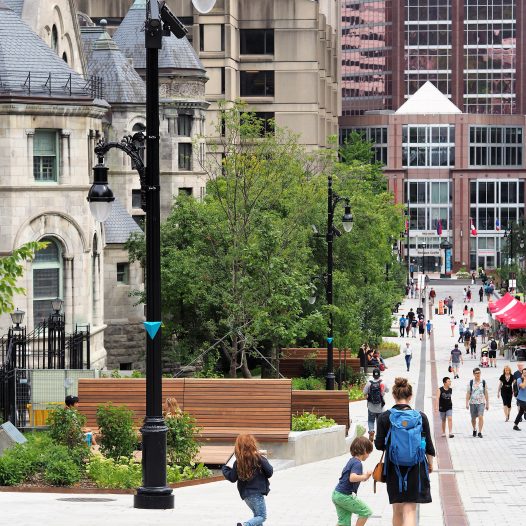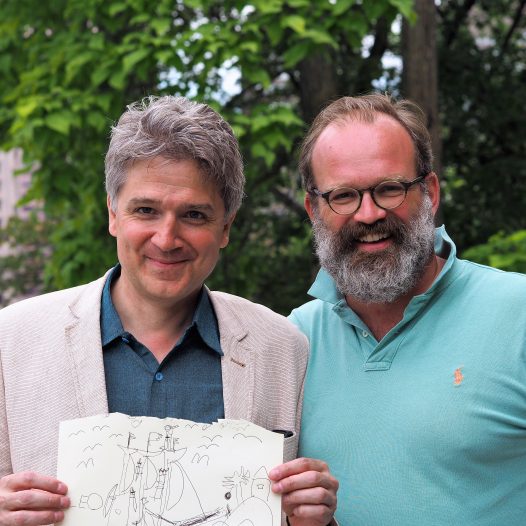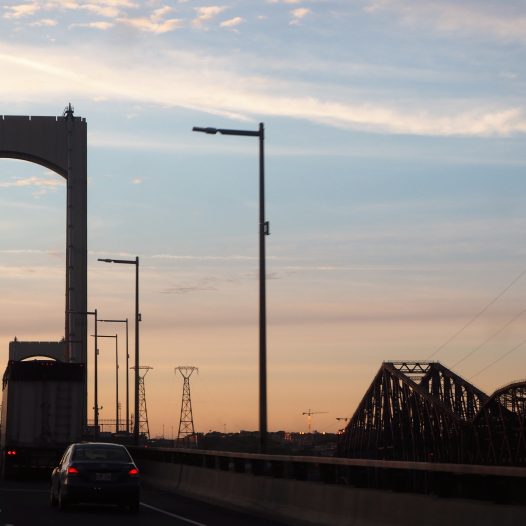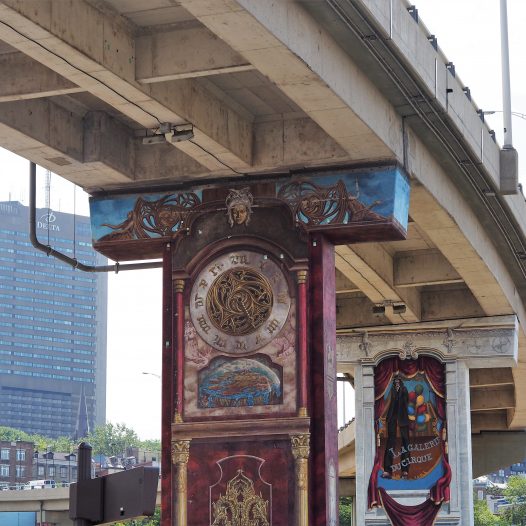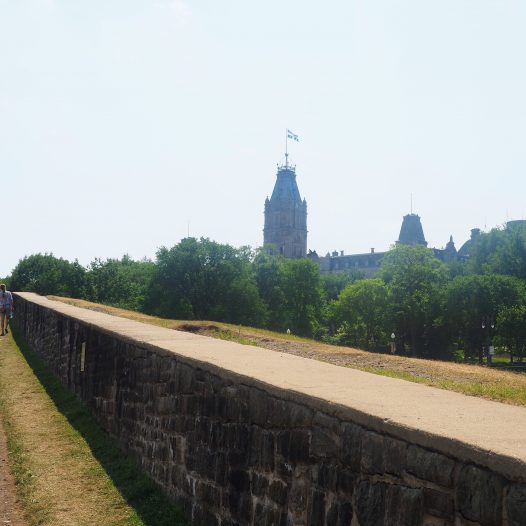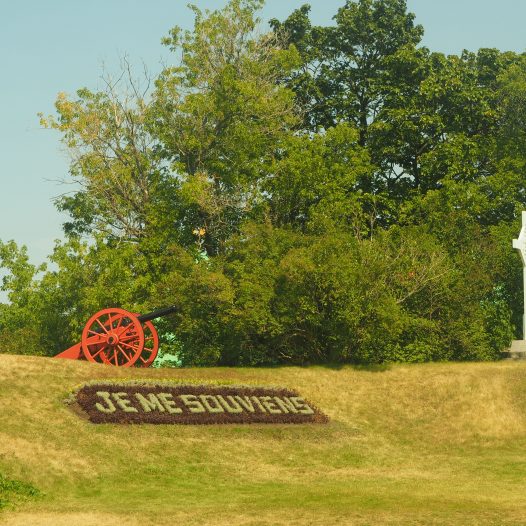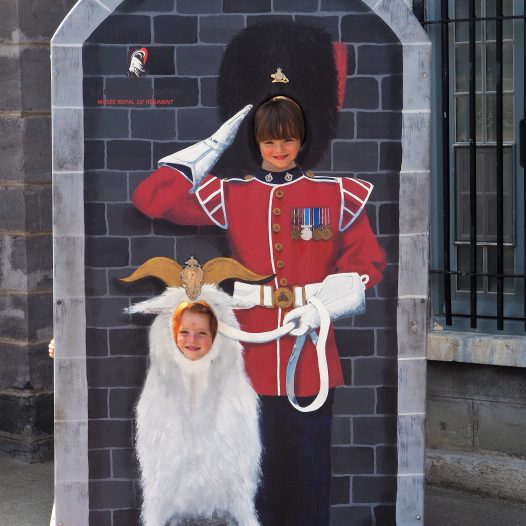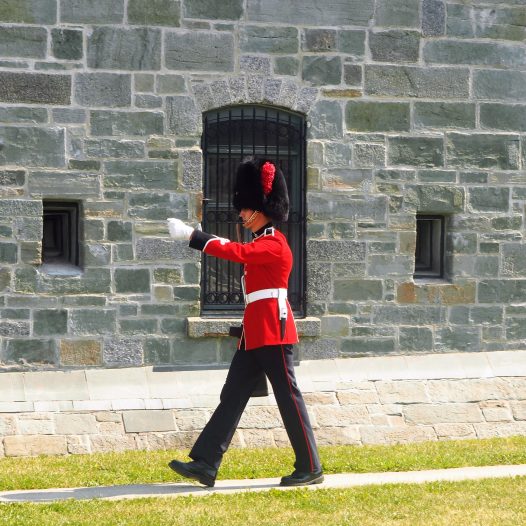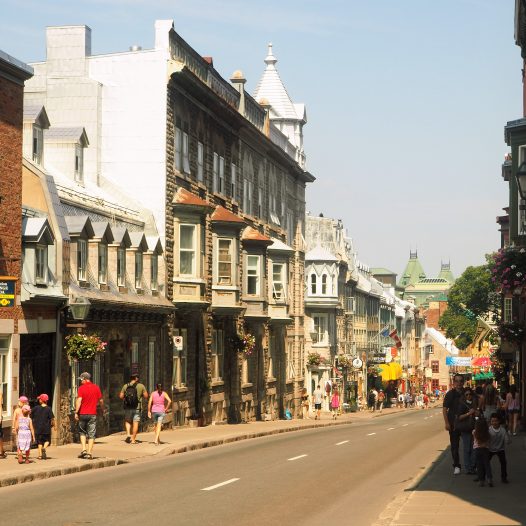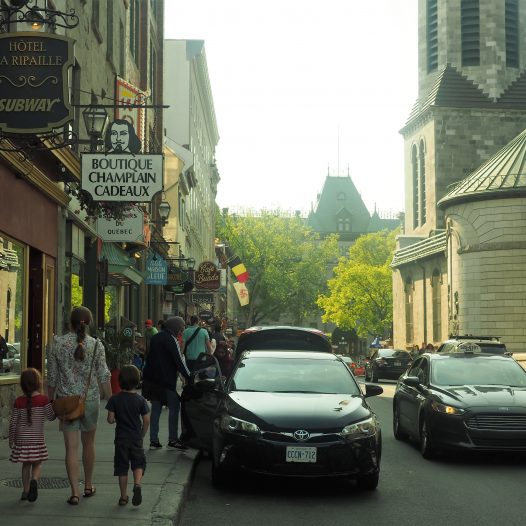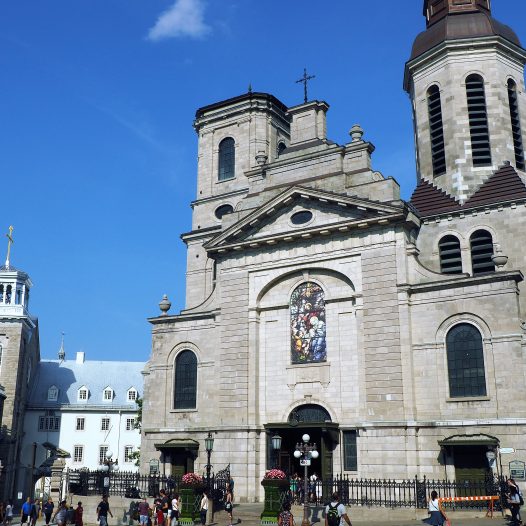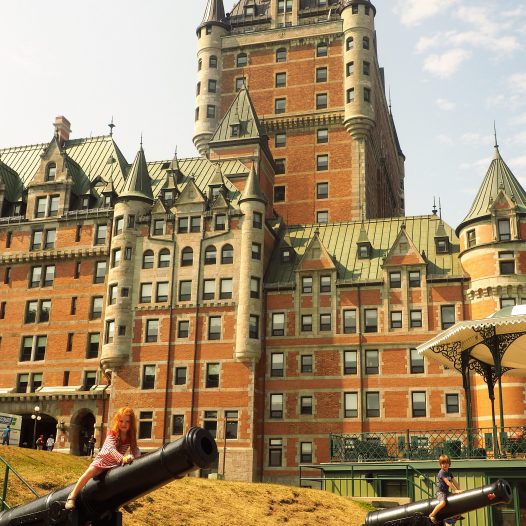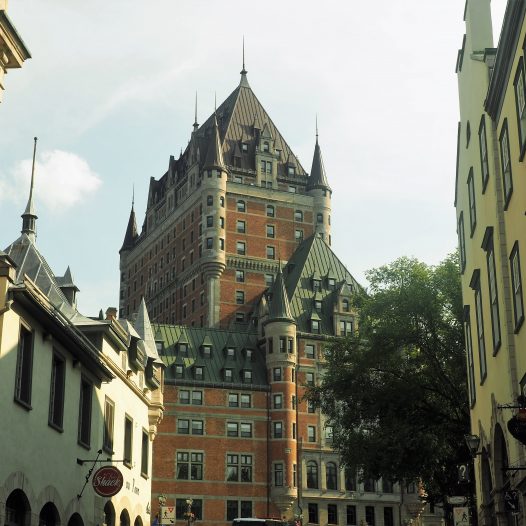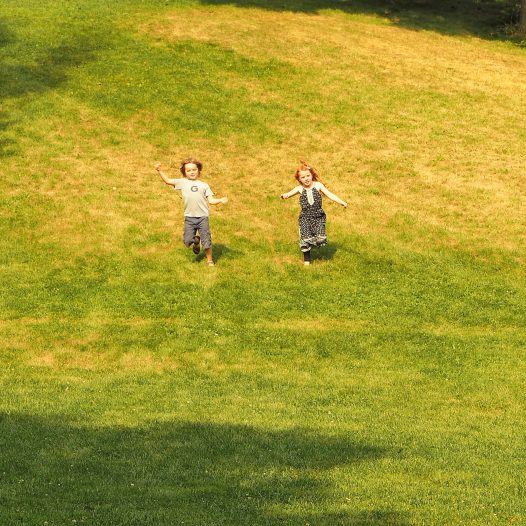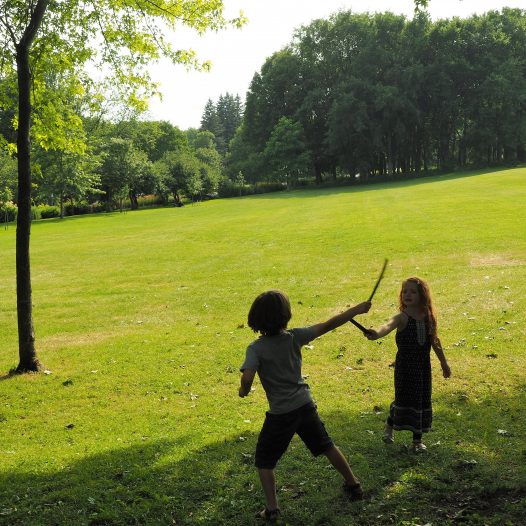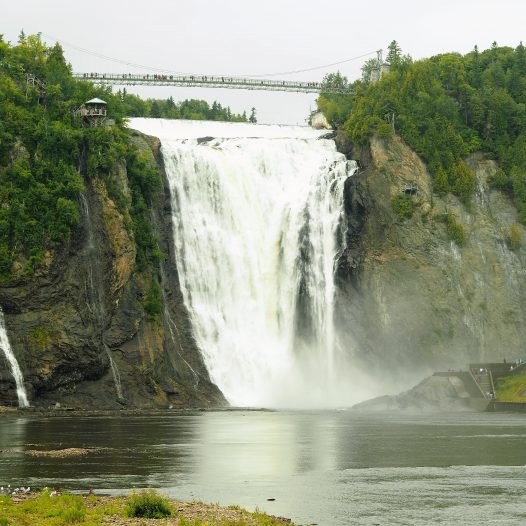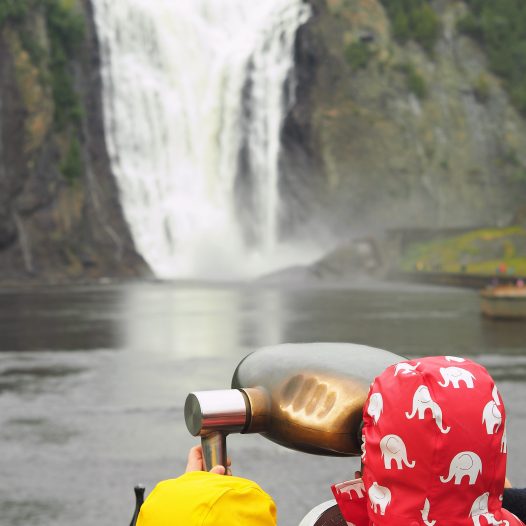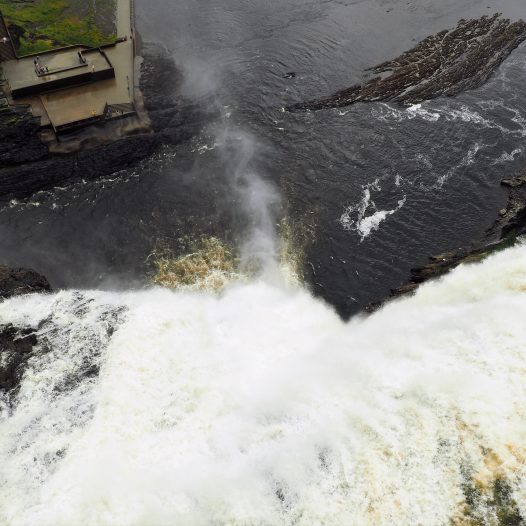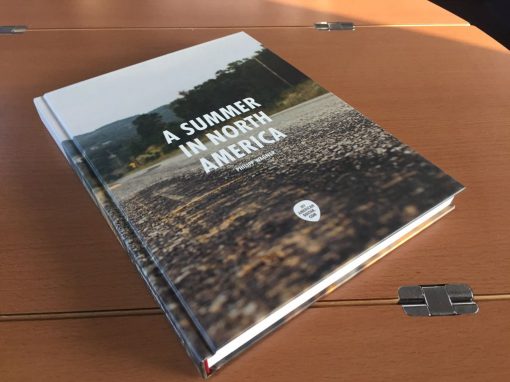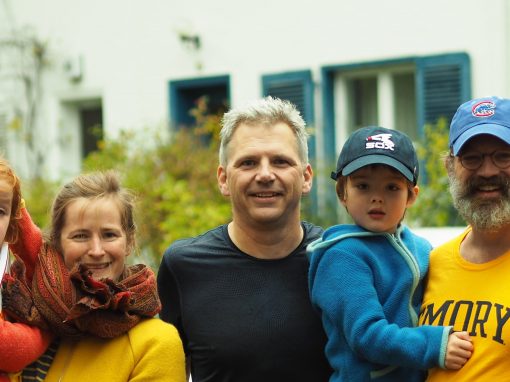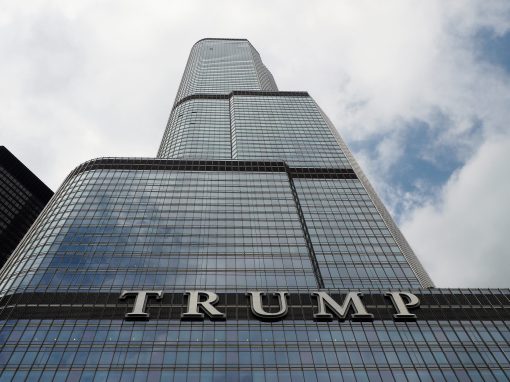Excitement is in the air when we approach the Canadian border. After all, we have been moving around the US until now, and to us Europeans, who usually enter the US by air, crossing a US border on land is nothing that happens all the time.
We drive up to the control booth, and for the first time after two months, speak French. This is exciting. As I have spent a substantial part of my childhood in France, I have always wanted to travel to Québec, a part of the new world, where French is spoken by most people. What is it like to be here? Is it like France? Or is it something to the French what for the British must be the United States? We will be in Québec for four days only, but what an experience it will be to live!
Montréal
We approach the spectacular city of Montreal in the evening hours, after having crossed sobering flat lands, quite a contrast to the gently rolling green mountains of Vermont. We check in at our Holiday Inn in Montréal China Town, with a pagoda shaped roof and a slightly off Chinese flair.
The first evening though is a disappointment. We have been recommended by the receptionist at the hotel to have dinner in the rue Saint Paul down in the old town. Don’t do it. The walk there is nice and looks promising, as does the rue Saint Paul, but the Alsatian style restaurant which we choose as it appears correct, reveals to be just as touristy as it can possibly get. I cannot believe how bad the food is and when they are serving my wife a piccolo bottle of “Henkell” Sekt (German sparkling wine) as a coupe de Champagne, which is warm on top of everything else, words fail me.
The next day changes everything. As we start moving around the city, we discover the real places like the quarter of the Mont Royal further north, but only after having explored the Notre-Dame Basilica of Montréal, followed by a lovely boat tour as well as a snack at the “Poutinefest”. I cannot convince anyone in my family to taste “Poutine”, a special Québécois dish (which is truly somewhat of an exaggeration). It is basically a basket of French fries drowned in gravy and topped with cheese and eventually other salty ingredients if you like. It is certainly great after a long night out, but I am not sure whether I would trade it in for its very distant relative in Berlin, our Berlin Currywurst.
Mont Royal is where we start to feel comfortable and enjoy an apéro at the Rouge Gorge, inhaling the atmosphere of the real city, away from tourist crowds an amidst the locals. And we listen to the conversations around us in Québécois which is so different from the French we know from France.
However, it is only on our last half day in Montréal that we begin to learn. We meet Fabien Gélinas, renowned arbitration practitioner and law professor at McGill University, for lunch on McGill campus. Fabien, whom I was kindly introduced to by a friend and colleague in Berlin, opens the story book of Québec to us, and I hope that the following may serve as a tour d’horizon:
Fabien explains how the French came to the region in the early seventeenth century and first founded Québec City in 1608 with – here he is again – Samuel de Champlain, before they moved further down the Saint Laurence River to establish Montréal in 1642 and other settlements in the North East of North America. Over 100 years later, in dislike of the French influence spreading out throughout all of Northern America especially through fur trade, the British conquered Québec City and thereby forced the French into a peace treaty to renounce to all of their territories in North America.
The French officers and civilians that were in Québec at the time were given the opportunity to stay which is why there is still French nobility in Québec today. As shortly thereafter, the British passed what the Americans refer to as the “Intolerable Acts” which were aimed to consolidate the British territories in North America, the American War of Independence broke out, leading to the founding of the United States of America in 1776. To avoid that the remaining British territories in the North, today known as Canada, and in particular Québec, would join in the American rebellion, the British conceded all sorts of rights to their colonies. As regards the province of Québec, this included among other things, the right to keep French as their language. Eventually, over a century later, the British concessions lead to the independence of Canada as a sovereign nation in the form of a constitutional monarchy, its current monarch being the Queen of England. Nonetheless, as I find out later, the Québécois appear to never have fully accepted the British rule. On the bottom of every Québécois license plate is an inscription – “Je me souviens” (“I remember”) – by which the Québécois commemorate their French origins and the British suppression.
I am somewhat troubled after this conversation which is followed by our own research on the topic. It would seem to me that US American history neglects if not skips this aspect of North American history. Do the history books not suggest that it all started with the Mayflower in 1620? The heritage of the North American continent appears in a totally different light to me now.
In any event, while Fabien has given us these insights into the history of Canada, Leo has drawn a battle ship for him, which he meticulously cuts out of his scrap book and gives it to Fabien as a present. Whereupon Fabien shares with us a childhood memory of his. He was the same age as our twins, when he returned to his home in Montréal with his family after a three months trip through France, and rediscovered his home and everything in it anew, marking a very special moment in his childhood. As our trip is coming to an end, we embrace this perspective for our children, making it a bit easier for us to return home soon.
Québec City
We learn from our travel guide book that the English poet Matthew Arnold summarized the quality of life in Québec City with the following phrase:
“I would rather be a poor priest in Quebec than a rich hog merchant in Chicago.”
While I know for myself that for various reasons, I would not want to be either of them, I agree that Québec City is a wonderful place. One could probably say that if you were looking for a place to combine the French savoir vivre and atmosphere with the vast wilderness of North America, both of which very much appeal to me, Québec City is as close to this idea as you can get, directly followed by Montréal.
While my wife constantly compares Montréal and Québec City to the Swiss cities of Geneva and Lausanne, they remind me more of the North of France, especially Normandie and Brittany. I have never been to the very North of France, the so-called Pas de Calais, but I imagine that it must be similar. Especially when you then listen to the French Québécois which to me sounds similar to the Picardian dialect, today also known as “ch’ti”.
We visit the different parts of the city, especially the old town up on the mountain, and revisit the history of the place through its historic buildings and sites, such as the Citadel, still serving as barracks to the 22nd Regiment, or the famous Château Frontenac, today a Fairmont hotel, as well as the Plaines d’Abraham, where the decisive battle between the French and the British troops took place in 1759 under the British general Wolfe and the French général de Montcalm. The French have truly left an architectural heritage to the place that is outstanding in all of North America.
Paying tribute to the wilderness mentioned earlier, we also explore the nearby Chute de Montmorency (Montmorency-Falls), which is not as large but nearly 100 feet higher than Niagara Falls.
Québec, you have intrigued us and taught us many lessons! A few weeks earlier, in a weak moment, we had played with the thought to drop this part of our trip. We’re so glad we didn’t. It was, next to all the enjoyable experiences, something like a missing link for me to better understand the history of your Southern neighbor.
